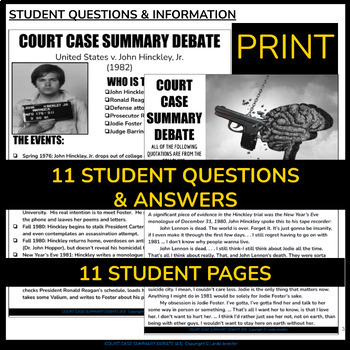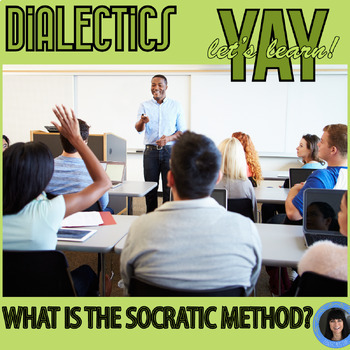Emergency sub plans high school, middle school, ELA, critical thinking, ethics
- Zip
- Google Apps™
- Internet Activities

What educators are saying
Products in this Bundle (2)
Also included in
- Argumentative text, NIETZSCHE, SOCRATES, ARISTOTLE, argumentative writingJust added Tinker v. Des Moines so page numbers have changedNEW PRODUCTS ADDED SO NOW 1070 PAGES and 464 SLIDESNOW 34 productsAre you looking to inspire intellectual curiosity in your students and teach them the works of some oPrice $75.99Original Price $151.76Save $75.77
Description
Emergency sub plans high school, middle school, ELA, critical thinking, ethics
The Socratic Method and COURT CASE SUMMARY DEBATE #3 (25% discount)
I teach The Socratic Method first and then COURT CASE SUMMARY DEBATE #3 in my course: Justice and Law/Revenge and Retribution
These two products go especially well together. The Socratic Method introduces students to the question of human evil and Socrates’ teaching on unwilling mistakes. The DEBATE presents an interesting challenge to Socrates’ teaching and allows students the opportunity to dig deeper into the dilemma of willing versus unwilling mistakes. Furthermore, the questions in the COURT CASE SUMMARY DEBATE ask students to engage in critical thinking - encouraging them to develop arguments using the facts in the case over mere expression of opinion. This ties into The Socratic Method where I explain the difference between truth and opinion.
See the preview for more information or click on the links below:
Here is the link for THE SOCRATIC METHOD:
THE SOCRATIC METHOD
Here is the link for Daily Dilemma #3:
COURT CASE SUMMARY DEBATE (#3)
You may also like the following:
Feedback on my COURT CASE SUMMARY DEBATES:
“Sub lesson that the sub and kids thoroughly enjoyed. It has inspired me to create more of my own. Thank you for this little gem.”
“So grateful for this resource!!”
“This was apparently a perfect sub lesson for my 10th grade. So sad I missed out on it with the kids! Thanks. They had a blast with this.”
“I teach an intervention class for freshmen and they loved this little lesson! Very engaging.”
Related Products
• CRITICAL THINKING - DILEMMA ONE SHEET (#2) critical thinking, debate
• CRITICAL THINKING ACTIVITIES: DILEMMA ONE SHEET (#1) Informational text
• CRITICAL THINKING: DILEMMA ONE SHEET (#5) (cross-curricular, 1st Amendment)
Customer Tips:
How to get TPT credit to use on future purchases:
• Please go to your My Purchases page (you may need to login). Beside each purchase, you'll see a Provide Feedback button. Simply click it and you will be taken to a page where you can give a quick rating and leave a short comment for the product. I value your feedback greatly as it helps me determine which products are most valuable for your classroom so I can create more for you.
❤️ Click HERE to become a follower. You will now receive customized email updates about this store.
Copyright © jellycat-in-the-snow productions
All rights reserved by author Permission to copy for single classroom use only Electronic distribution limited to single classroom use only
Please remember that any of the products that you download from my store are my copyrighted property and licensed only for you to share with your direct students. If another teacher wants to use these same products, they will need to purchase them directly from my TpT store, or you may purchase an additional license for them. None of my products may be shared online. Posting of my copyrighted materials may happen only in a password-protected environment, such as Google Classroom, and accessed only by your students. Posting on public websites (WordPress, Blogger, Facebook Groups, etc.) is strictly prohibited.






